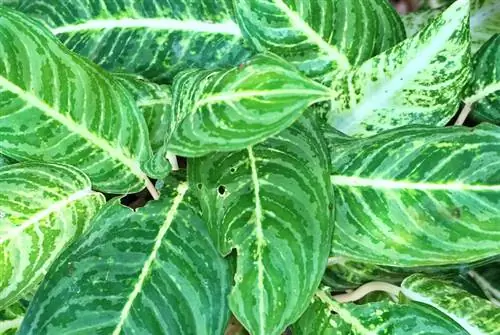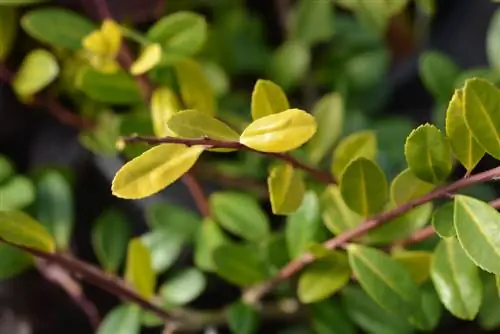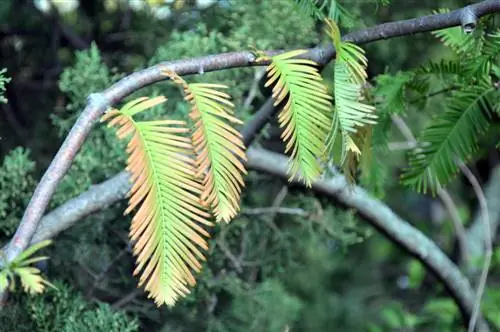- Author admin [email protected].
- Public 2023-12-16 16:46.
- Last modified 2025-01-23 11:21.
The Douglas fir is a stately plant that, from a purely external perspective, is bursting with strength. Is there really nothing that can stop this tree from growing upwards? Or maybe there are illnesses that can bring him to his knees?

What diseases can occur in Douglas firs?
Douglas trees can be affected by diseases such as rusty Douglas fir (Rhabdocline pseudotsugae), sooty Douglas fir (Phaeocryptopus gäumannii) and root rot. Young trees in particular are vulnerable and benefit from preventative plant strengthening.
Indigenous and introduced diseases
About 200 years ago, the Douglas fir migrated from North America to Europe, where it thrives and is now quite widespread. But unfortunately it is also susceptible to some native tree diseases.
In the meantime, pests have also been introduced from their homeland and more may be added.
Young trees are more susceptible to disease
Young Douglas firs in particular are susceptible to disease because they are not yet sufficiently strong. It is primarily fungi that cause problems for the tree. First of all, the following diseases should be mentioned:
- Rusty Douglas Fir (Rhabdocline pseudotsugae)
- Sooty Douglas Fir (Phaeocryptopus gäumannii)
- Root rot
Tip
When young, Douglas firs can be treated preventatively with plant strengtheners (€83.00 on Amazon).
Rusty Douglas fir chute
The two Douglas fir spills caused by ascomycete fungi can spread in damp locations and if the planting is too dense. The rusty Douglas fir chute manifests itself with the following symptoms:
- Needles turn yellow-brown
- Loss of needle will follow soon
- there will be severe losses in growth
- If the infestation is severe, pests or other fungal species follow
This fungal disease rarely causes the tree to die, as the upper parts of the tree are usually spared. However, if bark beetles or honey fungus also spread, the life of the tree is seriously threatened.
Tip
The so-called coastal Douglas fir is characterized by less susceptibility and is therefore often planted.
Sooty Douglas Fir Spill
This ascomycete spreads more quickly, which is why the tree often dies within a year.
- In spring needles turn yellow
- starting from the middle of the tree
- later they fall off completely
Sprays with fungicides alleviate the visible symptoms, but do not eliminate the cause of the disease, which is why they ultimately remain ineffective.
Different root rot fungi
Douglas fir is one of the most sensitive conifers when it comes to root rot. Injuries to the bark and roots make it easier for a fungal pathogen to penetrate inside the tree, where it remains undetected for a long time and gradually decomposes the tissue. If it is discovered because it forms visible fruiting bodies on the trunk, any help will come too late.
That's why it's important to avoid any injury. When planting, care must be taken to ensure that the roots are not damaged. This also applies to all digging in the root area.






